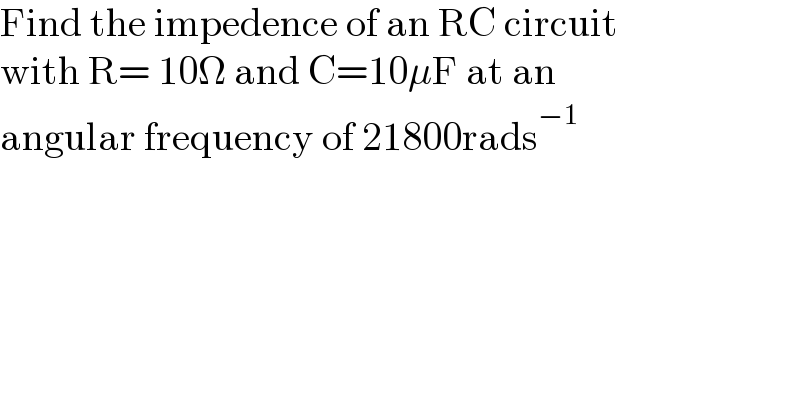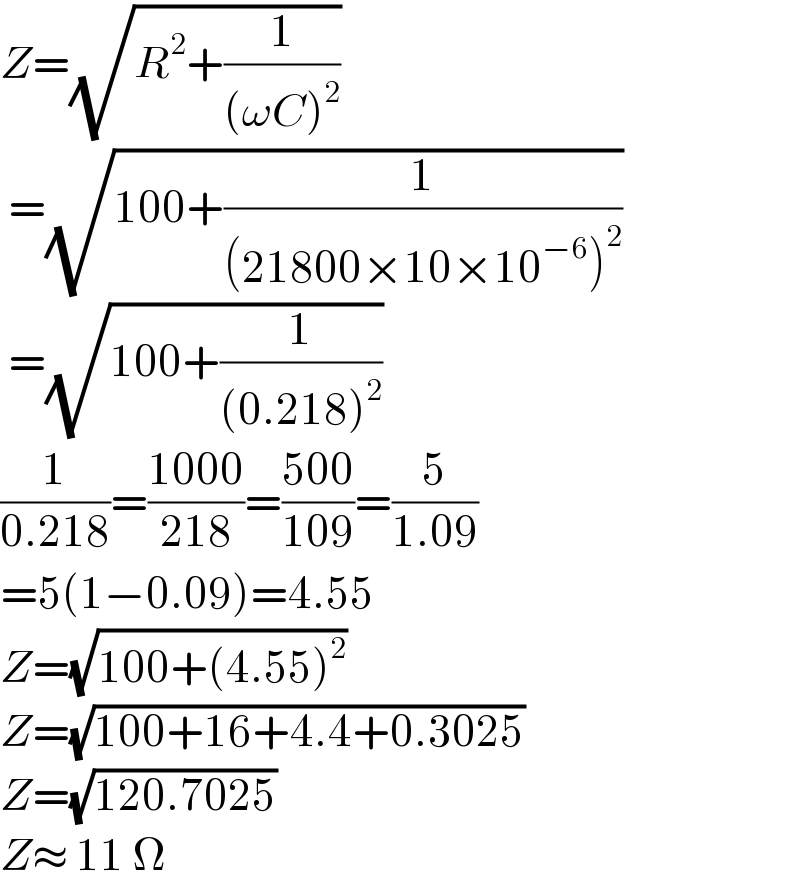
Question and Answers Forum
Question Number 138764 by otchereabdullai@gmail.com last updated on 17/Apr/21

Answered by ajfour last updated on 18/Apr/21

Commented by otchereabdullai@gmail.com last updated on 18/Apr/21

Answered by physicstutes last updated on 18/Apr/21
![impedance Z =(√(R^2 +(X_L −X_C )^2 )) but X_L = 0 since we have an R−C circuit. ⇒ Z = (√(R^2 +X_C ^2 )) where X_C = (1/(2πfC)) = (1/(ωC)) = (1/((21800)(10×10^(−6) ))) ⇒ Z = (√(10^2 +[(1/((21800)(10×10^(−6) )))]^2 )) ≈ 11 Ω](Q138805.png)
Commented by otchereabdullai@gmail.com last updated on 18/Apr/21

